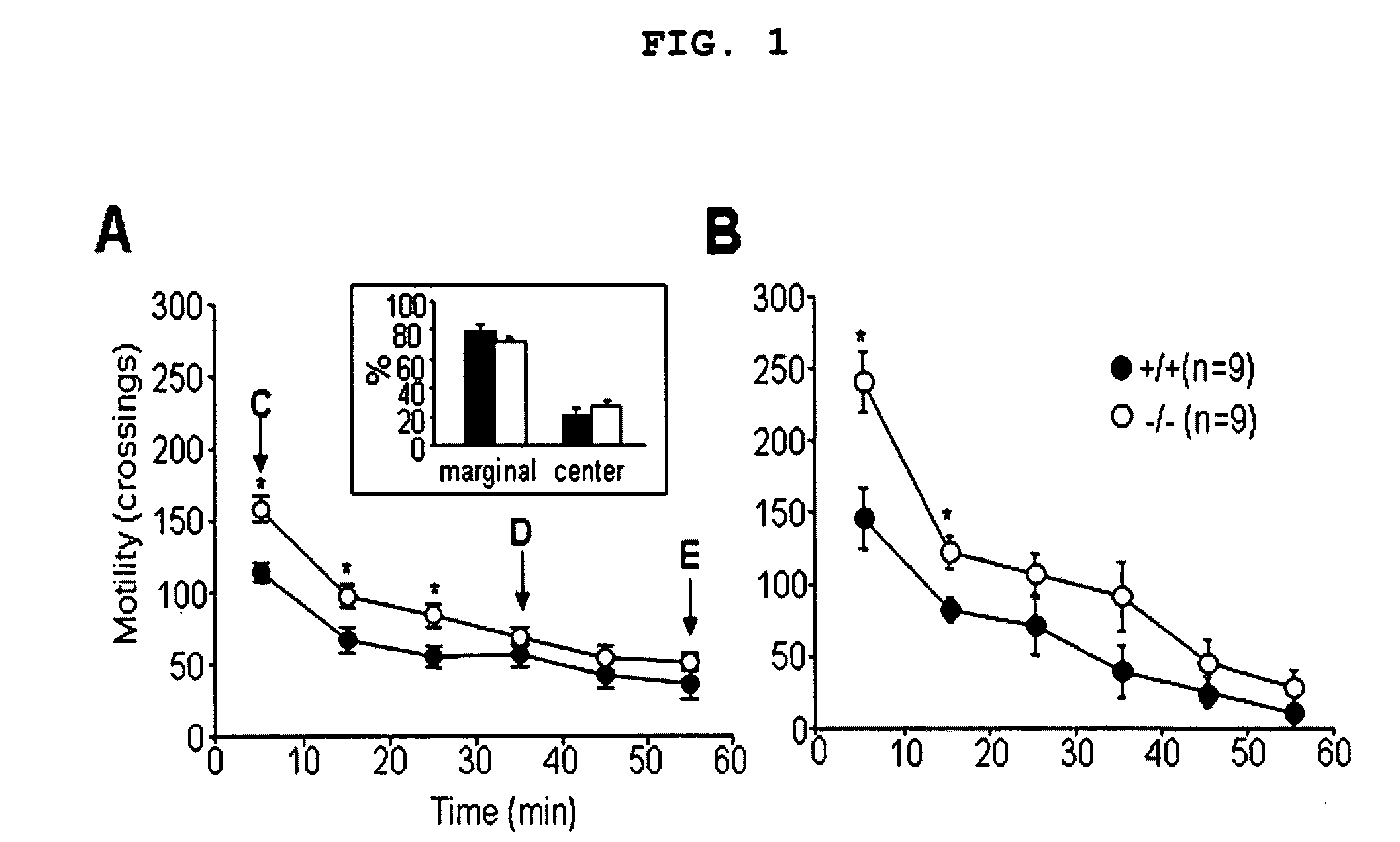Mice lacking alpha 1G showing enhanced novelty-seeking and alcohol preference and therapeutic methods for mood disorders by modulating alpha 1G T-type calcium channels
a technology of t-type calcium channel and mouse, which is applied in the field of 1 g t-type calcium channel transgenic mouse as a nervous disease model, can solve the problems of undiscovered physiological or genetic mechanisms involved in such behavior, and the effect of lacking 1g t-type calcium channel on the behavior of an individual has not been explained
- Summary
- Abstract
- Description
- Claims
- Application Information
AI Technical Summary
Benefits of technology
Problems solved by technology
Method used
Image
Examples
example 1
Generation of Transgenic Mice Deficient in α1G T-Type Calcium Channel (α1G − / −)
Construction of a Targeting Vector
[0058] In order to prepare transgenic mice deficient in a part or some parts of α1G gene of T-type calcium channel, the present inventors referred to the report “TRANSGENIC MOUSE WITH DISRUPTED CALCIUM ION CHANNEL ALPHA 1D GENE AND PRODUCTION METHOD THEREOF” (Application No: 10-2001-0028803) applied for a patent by the present inventors on May 25, 2001.
[0059] Particularly, a mouse cDNA of the α1G gene (cacna1G) sequence corresponding to 688-1008 bp of the rat cDNA was isolated by RT-PCR. Using the above isolated sequence as a probe, a bateriophage lamda FIX II library (Stratagene) wherein DNA fragments of 129 / svJae mouse genome were inserted randomly was screened. From this, the genomic phage clone containing α1G gene was selected and confirmed by restriction mapping, Southern blotting, and sequencing.
[0060] The targeting vector was designed to delete most of the exo...
example 2
Investigation of Behavioral Changes of Transgenic Mice Deficient in α1G T-Type Calcium Channel
Investigation of Reactivity to a New Environment
[0067] In order to investigate reactivity to a new environment and a strange subject of α1G calcium channel transgenic mice, the present inventors transferred them to a breeding cage and an openfield to observe their behavioral changes.
[0068] First, for the analysis of behavioral aspect of a transgenic mouse in a new breeding cage, each mouse was raised dependently in a cage for 24 hours. Then, the mouse was transferred to a new cage and its behavior was recorded for 1 hour by DDC camera. A person who was not informed about its genotype observed the behavior by the recorded tape.
[0069] For reactivity test in an openfield, a test animal was transferred to a test room one hour before the test began and each animal was put in an independent breeding cage for adaptation. The floor of the openfield (white acryl, 50×50×50 cm) was covered with 0...
PUM
| Property | Measurement | Unit |
|---|---|---|
| Magnetic field | aaaaa | aaaaa |
| Stress optical coefficient | aaaaa | aaaaa |
Abstract
Description
Claims
Application Information
 Login to View More
Login to View More - R&D Engineer
- R&D Manager
- IP Professional
- Industry Leading Data Capabilities
- Powerful AI technology
- Patent DNA Extraction
Browse by: Latest US Patents, China's latest patents, Technical Efficacy Thesaurus, Application Domain, Technology Topic, Popular Technical Reports.
© 2024 PatSnap. All rights reserved.Legal|Privacy policy|Modern Slavery Act Transparency Statement|Sitemap|About US| Contact US: help@patsnap.com










